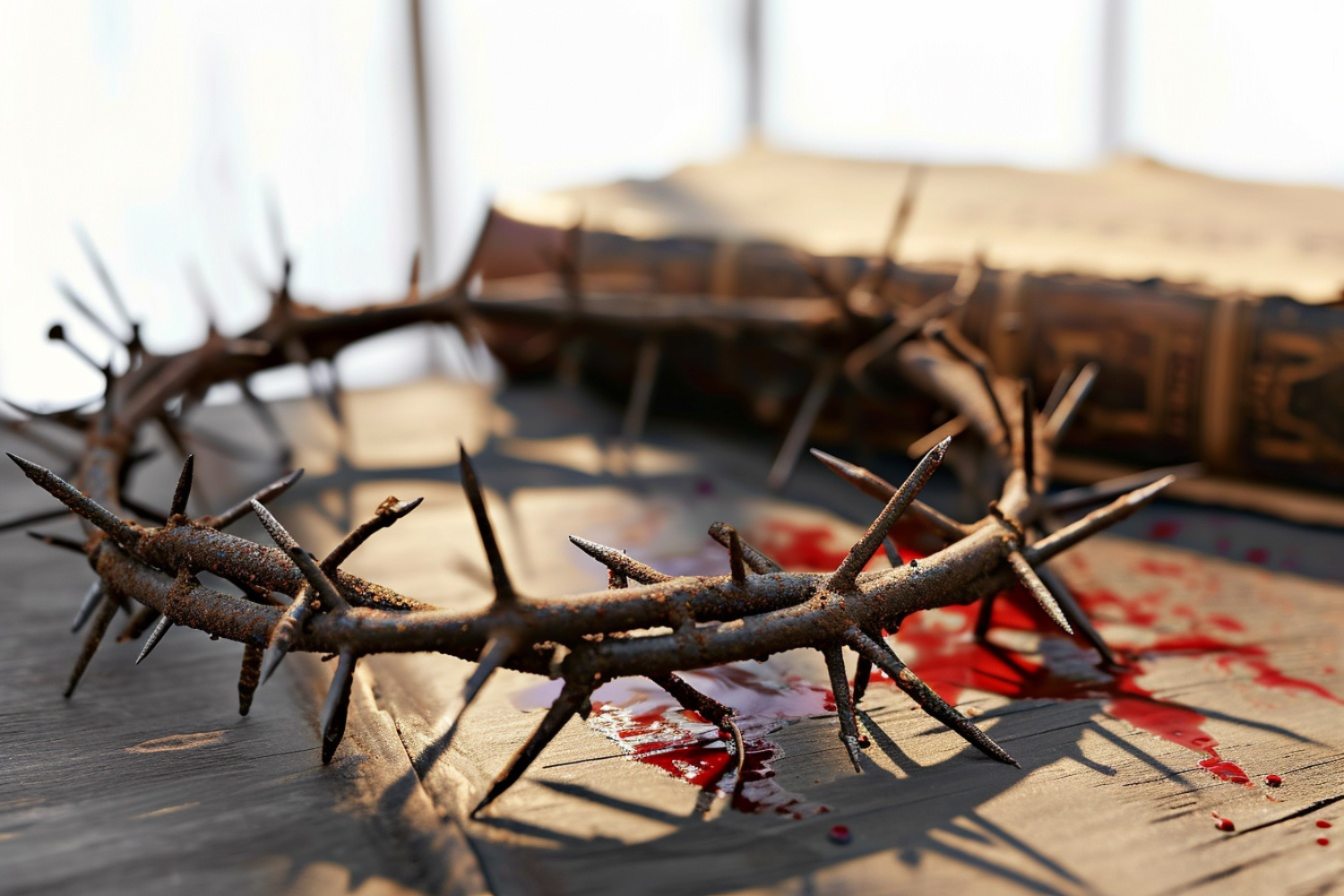The climactic point in the gospel narratives and the climactic moment of the ages is that Jesus died!1 His was the death of death! By His death, the redemption that He came to achieve had been accomplished once for all.2 Here, we learn that the cross is the one remedy for the sin that Adam brought on this world (Rom 5:12–21).3 In His death on the cross, we see the final act of a life of obedience. He willingly and in obedience to His Father, took our sins on himself, was even willing to become separate from God for the only time in all eternity (Matt 27:46), and in that act brought forgiveness to humankind (26:28).4 So why then do we have verses 51-54 appended to this account, if I must say, the greatest scene in all history?
I believe it is to further prove the decisive importance of the death of Jesus for all of history. So, Matthew records a series of supernatural events starting with the veil of the temple tearing from top to bottom.5
Testimony from the curtain
Although Matthew doesn’t say which veil, it is likely the veil separating the holy of holies from the holy place. By the way, since the book of Acts tells us that some of the priests turned to the Lord, I have reasons to believe this piece of news came from them. Whatever the source is, the question is, what does Matthew intend by including it in his narrative? I believe it is to tell us three things (at the very least) about the temple following the death of Jesus.
- That the curtain split from top to bottom was an act of God.6
- I believe it points to the wrath and judgment of God against the Jewish authorities for this heinous act against Jesus.7
- It points to unrestricted access into God’s presence, by the death of Jesus, who removes the sacrifices and priesthood (including the curtain), by the sacrifice of Himself, making available to all people the way (Heb 10:19–20).8 Matthew, we can say, seeks to point to us that the death of Jesus establishes the priesthood of all believers.
Testimony from the resurrected saints
This is a supernatural event, though it perplexes a lot of us, but I believe it was also included to show the decisive importance of the death of Jesus. I don’t want to be drawn into issues like what kind of bodies they had and if they died again; rather, I want to focus on what the event proves.
While the curtain tearing proves that Jesus’ sacrificial death opens access to God, the resurrection of the saints should be taken to prove that Jesus’ victorious resurrection promises the final resurrection of those who die in Him, even those in the Old Testament who trusted Him.9
I agree with Wenham’s alternative reading of the verse, where he places a full stop not after “split” (v.51), but after “broke open” (v.52).10 so that it reads like this: “…the earth shook and the rocks were split and the tombs were opened. Many bodies of the saints who had fallen asleep were raised and coming out of the tomb after His resurrection…” This way, two things are clear. One is the victory over death that Jesus’ sacrifice on the cross accomplishes.11 And two, the resurrection of people who lived before Jesus is as dependent on Jesus’ triumph as the resurrection of those who come after him.12 This is an extraordinary testimony that confirms “that Jesus is who He had claimed to be and that His ministry stands vindicated.13
Testimony from the Gentiles
What the soldiers, who had performed the crucifixion, saw made them draw a different conclusion at the end. Matthew recorded them accepting Jesus’ claim after seeing the earthquake and other events and said, “Truly this was the Son of God.” They understood that the death of Jesus showed Him to be the Son of God. Even to these Gentiles, it was clear that there was something in the death of Jesus that showed that He was not just another man.14
This moment marks a theological climax. God has twice declared Jesus to be His Son (3:17); the demons have acknowledged it (8:29); Jesus Himself affirmed it (11:25–27); and the disciples confessed it (14:33). At His trial before the Sanhedrin, this very claim became grounds for His condemnation (26:63), later fueling Jewish mockery (27:40, 43). Now, however, for the first time, those outside the community of faith recognize and openly proclaim this truth.15
The one question now to you is, do you believe that “truly [Jesus] [is] the Son of God?” “And believing you may have life?”
- Donald A. Hagner et al., Matthew 14-28, Volume 33B. ↩︎
- Michael J. Wilkins, Matthew. ↩︎
- Grant R. Osborne and Clinton E. Arnold, Matthew. ↩︎
- Grant R. Osborne and Clinton E. Arnold, Matthew. ↩︎
- Donald A. Hagner et al., Matthew 14-28, Volume 33B. ↩︎
- Douglas R. A. Hare, Matthew. ↩︎
- Donald A. Hagner et al., Matthew 14-28, Volume 33B. ↩︎
- Douglas R. A. Hare, Matthew. ↩︎
- D. A. Carson, Tremper Longman III, and David E. Garland, Matthew. ↩︎
- Grant R. Osborne and Clinton E. Arnold, Matthew. ↩︎
- Michael J. Wilkins, Matthew. ↩︎
- D. A. Carson, Tremper Longman III, and David E. Garland, Matthew. ↩︎
- Michael J. Wilkins, Matthew. ↩︎
- Leon Morris, The Gospel According to Matthew. ↩︎
- R. T. France, The Gospel of Matthew ↩︎

